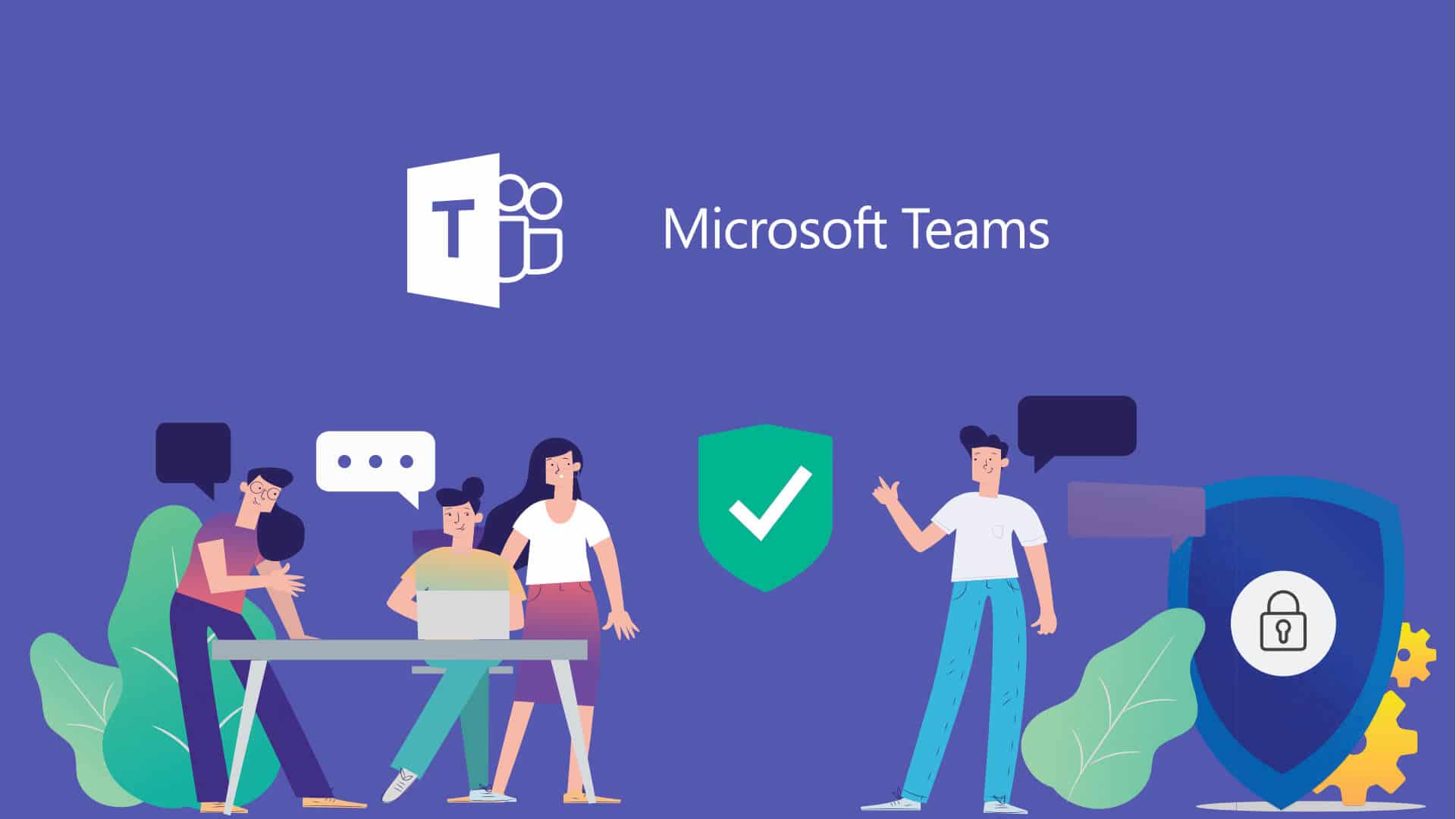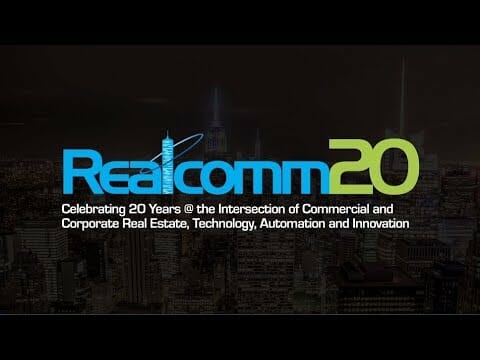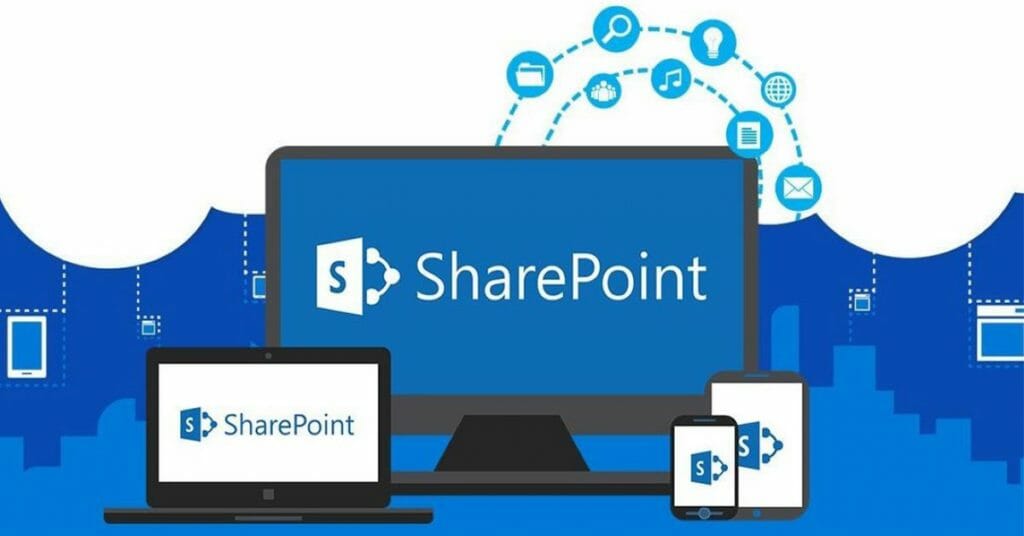In today’s environment working remotely is a key factor to success and Microsoft 365 and Teams has answered the call to help enhance and streamline collaboration. In this video the REALTY|share team shows you how quick, effective , and easy it is to collaborate with your team members inside of the REALTY|share platform, the industry’s only Office 365/SharePoint document management and portal solution exclusively built for real estate companies.
Arcuity to Exhibit at Realcomm 2018; Demonstrate Innovative Real Estate Process Management Solution, REALTY|share
REALTY|share was designed and developed to empower real estate firms by providing
invaluable order, efficiency, and insight for their real estate operations.
Alpharetta, GA, May 31, 2018— Arcuity, Atlanta’s only firm delivering value-focused workflow and process efficiency accelerators for the SharePoint platform, today announced it will be an exhibitor at Realcomm 2018, where it will be demonstrating its revolutionary REALTY|share business accelerator.
REALTY|share is a secure, comprehensive real estate process, content management and collaboration framework built on Office 365 and SharePoint and powered by Nintex workflows. It helps firms gain management and oversight of real estate resources while keeping clients, partners and investors up to speed.
“Commercial real estate firms are under the gun not only to maintain and manage their portfolios efficiently but also to satisfy the demands of investors, partners and clients,” said David Hammond, president of Abel Solutions. “REALTY|share is proven to be 100% successful in helping real estate companies painlessly streamline their processes—from organizing and accessing resources internally to providing updates and insights through a feature-rich information portal.”
REALTY|share Highlights:
- Organize documents securely across deals, with version management to eliminate duplicates.
- Track checklists and deal-related action items, from due diligence and construction checklists to tax returns, investor reports and other deliverables.
- Access content in the office or remotely, via browser, desktop or mobile device.
- Manage and track contacts and contact activity—investors, properties and more.
- Locate documents easily with Google-like search functions.
- Securely share any document—and other information—with third parties: investors, lawyers, contractors and architects.
- Extract and organize key metrics to view powerful insights about properties and their activities through dashboards, reports and scorecards.
Realcomm 2018 attendees can visit Abel Solutions and view REALTY|share demonstrations in booth #915.
Incorporating External Data in your Real Estate Management System
During the course of implementing one of our Business Solution Accelerators, REALTY|Share (a Real Estate Management portal based upon SharePoint or Office 365), for many of our clients we have been introduced to many business philosophy models within the real estate/property development industry. We’ve learned from our customers that our Business Solution Accelerator addresses the majority of their needs regarding their processes. Customers leverage REALTY|Share’s core functionality of property sites, Contact Management Module, My RE Portal, and our custom search center to handle document management and track property projects from a pursuit down to lease-up and disposal.
Even though philosophies are different from business to business, the hot item that remains consistent is the need to consume data from external systems, such as the financial data stored within the Real Estate industry standard systems such as MRI and Yardi, and display financial data as well as route documents from these sources into our real estate management system. By working with our partners, we have been able to provide a solution to answer that need.
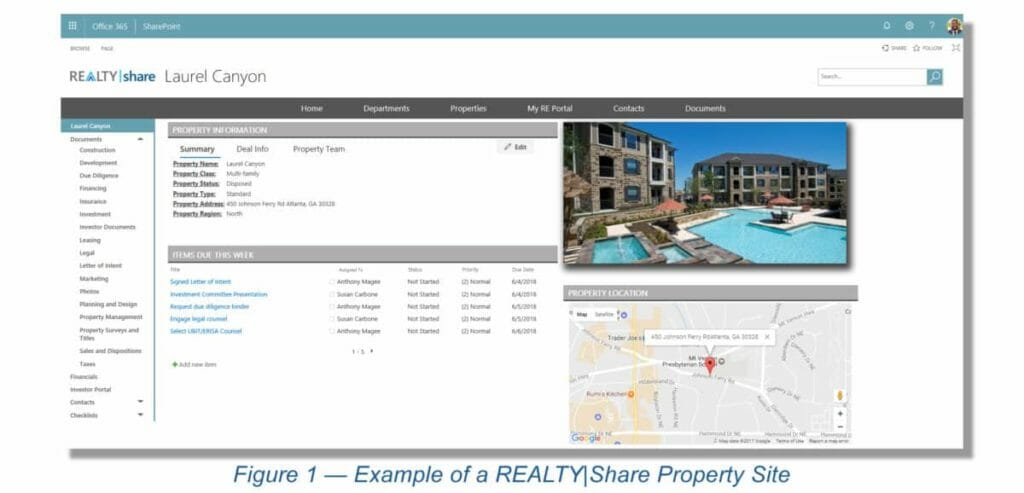
We understand most Real Estate development projects start in one of these industry standard solutions, and when a project is created, each project is assigned an entity or project ID within the system. Real Estate developers can then associate other data points depending on the company operational guideline (such as property name, property address, property type, and square footage). To ensure our Solution Accelerator is easy to use and will be well received by end-users, we implemented functionality that connects to the external data source to retrieve those values and syncs them to REALTY|Share.
So why is this important? What value is this for my company? The answer is that now when you create new properties, you no longer need to maintain two systems. As you update your source of truth in your external system (such as MRI and Yardi in the case of many of our Real Estate clients), the changes you make there will be pushed down to your property sites within REALTY|Share. This function keeps data consistent between your industry-standard system and your document management system.
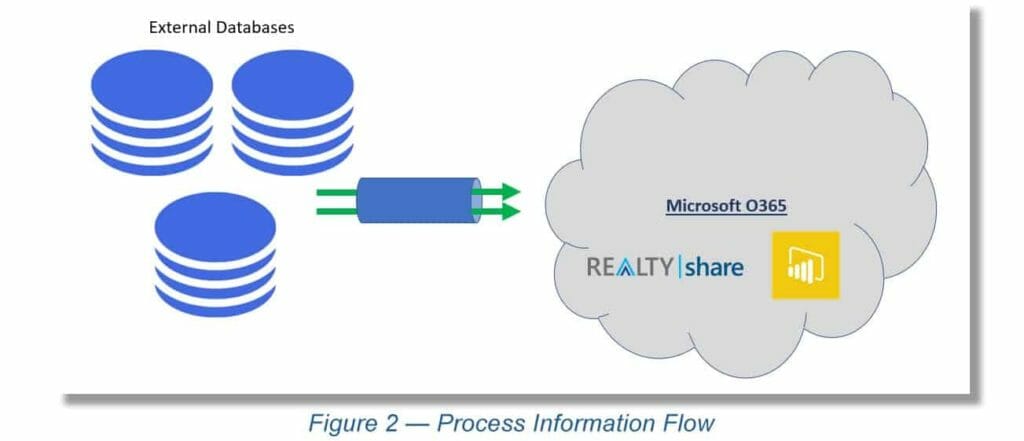
Now that your property financial data is stored within your intranet system and synced to receive updates/changes, you can start getting even more value from that data. Everything is housed in O365 and can be leveraged by the Microsoft tools such as Power BI. Power BI will give you the power to transform and display your data with graphical charts and dashboards, giving your executives a real-time snapshot of where the company currently is and how the company is trending.
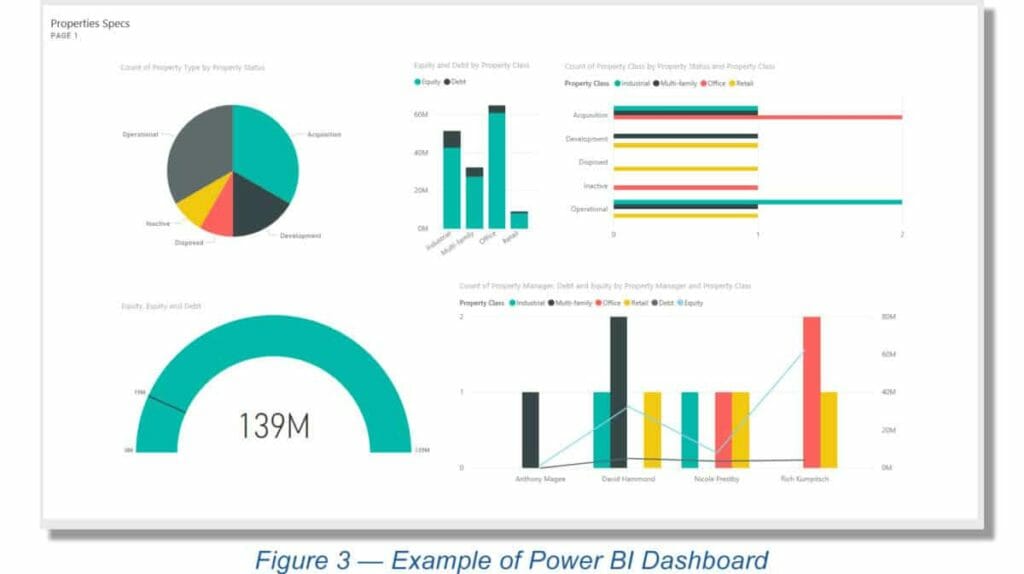
We understand companies leverage multiple software solutions in their everyday work to get their jobs done. But working within REALTY|Share gives your team a single platform that offers the capacity for both tracking data and managing documents. Merging these two components into one platform allows your end users to effectively work within one portal instead of jumping back and forth in between systems, thus enabling them to work more efficiently.
This tip written by Abel Solutions Senior SharePoint Consultant and Solution Accelerator Manager Anthony Magee.
5 Steps to Help End-Users A.D.O.P.T – Real Estate Corporate Intranet O365 Edition
When clients decide to invest in a SharePoint portal, they do so with the intent to create synergy and efficiency with its implementation. If the process is not handled with the end-user in mind, many may be surprised to find that individuals are slow to embrace the change. So how do you avoid being faced with the quandary of “How do I get my end-users to buy into the new corporate intranet?” We address this question in this tip by sharing the 5 steps to get end-users to A.D.O.P.T.
Attention must first be paid to the overall appearance of the corporate intranet. People tend to gravitate towards things that they find attractive and appealing. Ensure that your new intranet has a well-structured and branded homepage/user interface. Provide it with a name that is consistent with the corporate lingo as this will bring familiarity and comfort and make it seem a part of the current corporate structure. Be sure that the content that is showcased is informative and pertinent. You want the end-user to feel that the intranet is providing a needed purpose and thus worth the transition from previous methods of obtaining the information contained therein
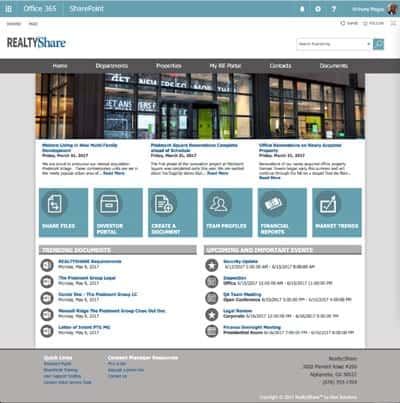
Dependability is important to end-users. Sharing and showing them how accessible the intranet is due to its features will be imperative in driving adoption. Demonstrate how moving items to the cloud via O365 will allow them to quickly access their documents and collaborate with team members regardless of their physical location. Share the benefit of being able to office anywhere via utilization of the Microsoft SharePoint app or mobile browser. If the users are able to access the Internet, they are able to access the intranet and thus their work.
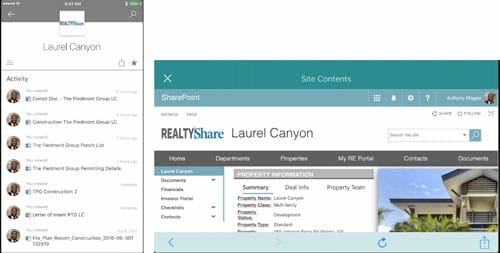
Organization was mentioned briefly in the Attention section but warrants additional focus. Ease of navigation will make your end-users feel that the intranet is simple to use. Organize the sites in a logical fashion, leveraging top and left navigation, based on the way that your users will access the information provided. Create shared SharePoint columns (Site Columns) on key areas that might overlap with other departments or groups within the organization such as: client name, State, City, etc. Implement a structured taxonomy and folksonomy—this will allow your end-users to tag documents using metadata (managed or otherwise), which makes material quicker to search, sort, filter, and group by a single button click.
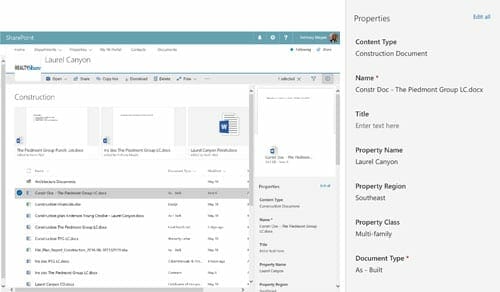
Processes must be put in place to make the intranet a constant and integral part of your end-users’ workflow. Search for common tasks that can be automated and handled via the intranet to create required engagement by your end-users to drive faster adoption. A few examples of automation that can replace current manual tasks include approval, three-state, and publishing workflows. Partner the task automation with other tools available via O365 such as Power BI, which provides a 360-degree view of data and analytics.
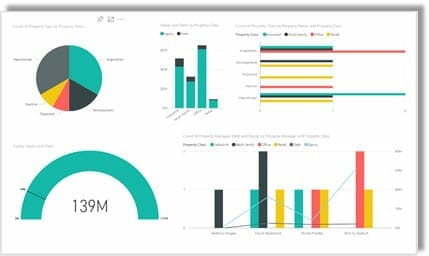
Teach your end-users how to best utilize the intranet after its implementation to achieve the final (but never-ending) step to adoption. The method and material used to introduce the intranet and its benefits must be open and fluid. Create a fun environment that encourages and fosters open dialogue and hands-on learning. Encourage continuous knowledge sharing throughout the transition via user group meetings where best practices and tips may be shared to increase efficiency. As end-users are continuously engaged and observe their peers sharing the same level of enthusiasm, it will build their confidence and thus usage of the intranet.
As you move through the 5 steps to help your end-users A.D.O.P.T., keep in mind that you may spend more time on a particular step depending on what needs to be done in that discipline to ensure success and thus optimal utilization. If you keep your end-users in mind and view the process through the lens of how it will benefit them, the implementation of the SharePoint portal will be a success.
This tip written by Abel Solutions Senior SharePoint Consultant Anthony Magee.
Leveraging SharePoint for Your Real Estate Enterprise Information Management Portal
Imagine a poll of 100 real estate executives about their confidence in their document management system.
- Do you have a common structure for managing documents for all your properties and/or projects?
- Are you confident you can find the document you’re looking for on any given day?
- Do you wonder sometimes whether the copy of the document you are looking at is the most current, up-to-date version?
- Can outside parties securely and reliably access the documents you need to share with them?
- Has your company adequately invested in the integrity of your information assets?
Our informal survey reveals that executive confidence in their company document and collaboration solutions is remarkably low. In most cases, they are using the Windows file system for storing documents. Much of the time, different offices or business functions have completely different file shares and tree structures. Very little governance over storage and naming conventions apply. Security is lax. Multiple copies of the same document abound. Version control is virtually non-existent. And if you ask a person in one department how they go about finding a document sourced by another department, you might see the whites of their eyes as their pupils roll toward the ceiling in mock disgust.
Making the Case for an Enterprise Information Management and Collaboration Portal
Low confidence in the current solution does not automatically justify investment in the time and money required of a new system. The old adage “if it ain’t broke, don’t fix it” does not apply here however. Companies with less than ten employees to organizations that have hundreds of staff recognize the value of a well configured solution through greater efficiencies, better security, easier access, elimination of duplication, and confidence across the enterprise that the information needed for a specific business task can be reliably accessed every time.
A central portal for real estate content management and collaboration provides business and corporate users a single place to go to access information about properties and projects in a consistent, user friendly way. All documents and tasks for the property along with key property information is available. Contacts can be stored in the portal or pulled in from external systems. Data from Yardi, MRI or other back-office systems can be accessed and displayed in the portal.
Solution Approach
If you’re like the vast majority of companies where Microsoft technology is at the core of most of what you do (Windows, Office, SQL, and now Office 365), the right portal platform is SharePoint (available as part of Office 365). SharePoint has evolved over 16 years to be a rock-solid portal for document management, collaboration, workflow solutions and more.
The trouble with SharePoint is that it appears deceptively simple to set up, but is in fact very difficult to configure effectively. What a real estate company needs is a framework solution for SharePoint that is purpose-built for real estate companies. The solution should leverage the deep experience of a company that understands the specific document and information management challenges of the real estate industry. Such a system should address the following core requirements:
Project/Property Site Template
The image below shows a sample project/property site. Each property site has a consistent layout with project/property information that is used to automatically tag documents added to the system. The company defines the layout of the site, the structure of the document libraries and the taxonomy tree (if applicable) to further tag documents.
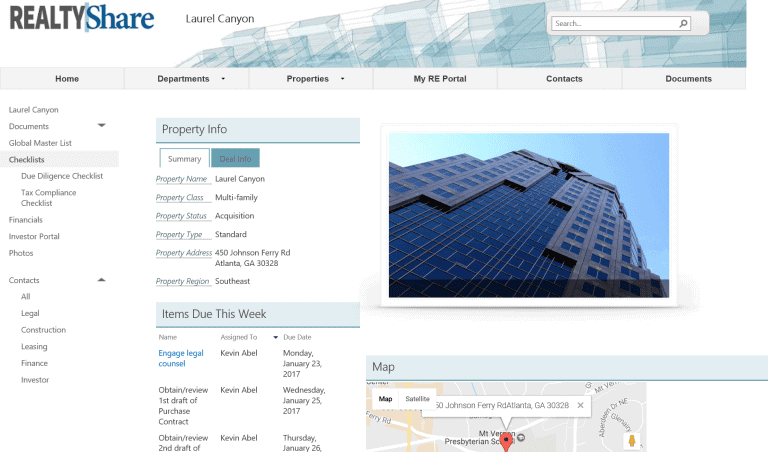
Corporate Taxonomy
The company will need to establish a common corporate taxonomy for all aspects of project/property document management that takes into account a balance between folders and metadata.
The image below shows an example where the top layer of a project/property has a number of document libraries whose documents inherit contextual metadata (i.e., Property Name, Property Type, Property Region, Document Type). Within a given document library (Document Type), the user can select Document Subtype from a taxonomy tree as shown in the example for the Construction Document Type.
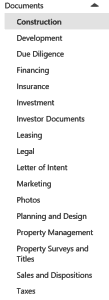
ocument Library Synchronization
The top level document library structure should be configured in a way that allows business users to use the SharePoint synchronization function to synchronize discrete document libraries that correspond to the business function(s) they are working on during a period in time. The image below shows how the Laurel Canyon property’s Construction document library has been synchronized and is accessible via Windows Explorer. The business user can do the vast majority of their work using the familiar, easy-to-use Windows Explorer interface, comfortable that all documents will remain in sync on the SharePoint portal.
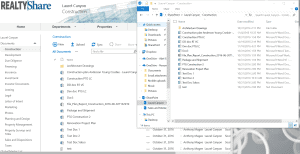
Network File Tree Interface
Company users would benefit from a global view of all files across the portal in certain use case scenarios. A SharePoint portal solution should come with a browser based view of the entire document management file structure presented as a familiar Windows Explorer-like file tree interface.
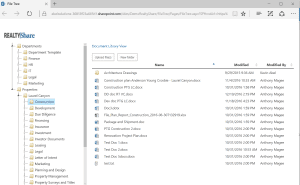
External Document Sharing
For documents or document libraries that need to be shared with outside parties, SharePoint can be configured to offer the capability to provide such external access.
Enterprise Search
With the implementation of a consistent and consistently used taxonomy, a well configured enterprise search function will provide users with the confidence that they can quickly and easily find the documents they are searching for. The image below shows how SharePoint search configured with refiners relevant to the company’s taxonomy allows for a satisfying and successful search.
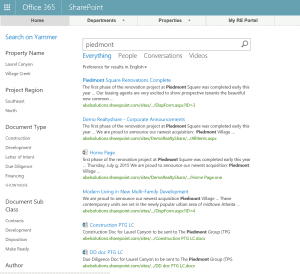
Investor Portal
For companies needing to share property information and tax documents with investors, the portal solution should include specific functionality to track investors and allow them to securely access documents relevant to the properties or funds they are invested in.
Summary
REALTY|Share is a SharePoint-based solution for real estate companies. Implementing a solution such as REALTY|Share, provides a company with all the benefits of the SharePoint platform while significantly reducing implementation cost and timeline as well as eliminating the risk associated with attempting to build a custom SharePoint solution from scratch.
After the initial implementation of a portal solution such as REALTY|Share, a real estate company is then poised to leverage the broad and deep capabilities of SharePoint to automate and enhance processes across the enterprise.
REALTY|Share Description
REALTY|Share is a document management, collaboration and workflow portal purpose-built for the real estate industry on the Microsoft Office 365/SharePoint platform. REALTY|Share has been successfully deployed at real estate companies across the United States, helping them gain control of their information management challenges by providing a single, consistent portal interface for all their document management and collaboration needs.
This tip written by Abel Solutions’ Founder Kevin Abel.

